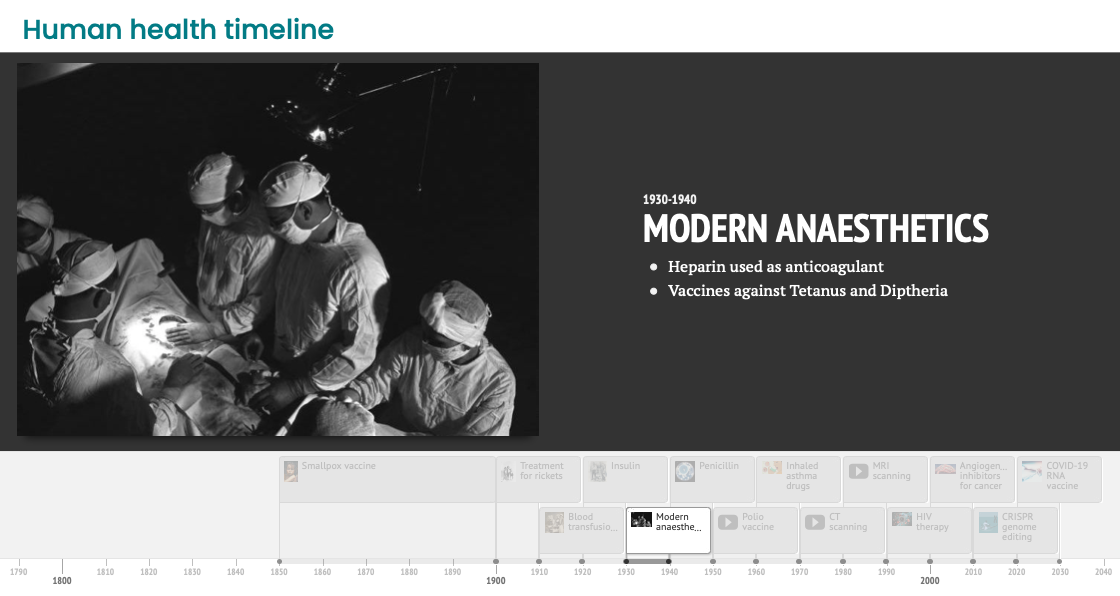Medical research for human and animal health
The purpose of biomedical research and testing is to understand the living body and what goes wrong in disease, and to develop safe and effective ways of preventing or treating those diseases. Animals are vital in all stages of this undertaking, not just in safety testing.
Although vital, the use of living animals is just one of three main research methods in medicine and biology. These methods are not alternatives to each other - they are complementary methods that are all equally valid and all contribute vital pieces to the overall picture.
In-vivo testing and methods refers to the use of a living animal or body, literally translating to "within the living".
The non-animal techniques are:
- in vitro techniques refer to non-animal tests, literally translating as "in glass". In vitro techniques involve the study of isolated molecules, cells and tissues (which may come from humans, animals, micro-organisms or even plants). This gives useful information about interactions between molecules, within or between cells, or about organ function.
- study of human beings and populations. Research on human subjects can give very useful information about the body in health and disease, and about the distribution of diseases in society, but is limited by what is considered ethical. In addition, use of computers and other high tech equipment can improve the efficiency of animal, non-animal or human research techniques.
The body is very complex and is much more than just a sum of its parts. We are just beginning to discover how stress can affect the body's defences against disease, for example. Or when developing a new drug to treat kidney disease, which might affect the heart or blood pressure, the only way to find out if it has such unforeseen effects is to test it on a living being.
Animals are only used when the answers to scientific questions cannot be obtained in any other way. Broadly speaking, animals are used in research and testing when it is necessary to see what happens in the whole living body, but the use of human subjects would not be ethically acceptable. Animal research and testing adds up to a fraction of all biomedical research.
Under the strict UK controls on use of animals in research and testing, comprehensive data are collected so it is possible to see in what areas of research animals are used.
Medical research for human health
Medical research has saved and improved the lives of millions of people. Animals have benefited too. Today's medicines and surgical techniques could not have been discovered without better understanding of disease and the way the body works - the result of basic research programmes in universities, hospitals and research institutes across the world. These insights can then be taken forward by pharmaceutical companies to develop new medicines which doctors and vets use to treat their patients.
Animal research has contributed to many of the medical advances we now take for granted. We have probably all benefited from vaccines and antibiotics to prevent and treat infections, and anaesthetics used in all forms of surgery. Medicines can now overcome serious conditions such as diabetes, asthma, and high blood pressure.
Research in the last few decades has also begun to tackle some of the more difficult medical problems such as heart disease, depression, and newly emerged infections such as COVID-19, HIV, and many cancers.
Science has developed a wide range of experimental techniques which are used in preference to animals. Despite this, many key questions in medical science can probably still only be addressed by studies on animals. These studies offer hope to millions who suffer from serious conditions such as cystic fibrosis, Alzheimer's disease, stroke, spinal cord damage and infections like malaria which are rife in tropical regions.
Mainstream medical and scientific organisations and leading scientists all agree that animal research is essential for medical progress.
"Scientific and medical research is a drawn-out process and the contribution of animal research is frequently overlooked by the time successful therapy reaches patients. We live longer and healthier lives than ever before. Whilst there have been remarkable improvements in the human environment, animal research has played a major part in developing improvements in human health. Animal research advanced the treatment of infections, helped with immunisation, improved cancer treatment and has had a major impact on managing heart disease, brain disorders, arthritis and transplantation". Professor Robert Winston

Look at our timeline and follow the links to see how animal research plays a key role in the development of many of the vaccines and treatments that we have today.
Read information about many diseases and conditions here.
More detailed, evidence-based information about the contribution of animal research to medical and scientific advances is available at AnimalResearch.info. See also the case histories in our report Medical Advances and Animal Research.
Please note that none of the information on this site is intended as medical advice. Further information on specific conditions and their treatment can be found at NHS Direct.
Medical and veterinary research for animal health
Medicines and vaccines for pets and livestock rely just as much on animal research as human medicines. And the majority of the medicines that vets prescribe are actually derived from those used in humans.
Many of the drugs and procedures used to treat people are equally effective in animals. The vet can use the same antibiotics and antiseptics; the same hormones, tranquillisers, local anaesthetics and general anaesthetics as doctors.
There are some treatments used exclusively in veterinary medicine, such as drugs or vaccines used against parasitic diseases that only affect a particular animal species. More than half a century ago, Sir Leonard Rogers calculated that the lives of more than 100 million animals had been saved by inoculation against anthrax and rinderpest (cattle plague) and a similar number by swine-erysipelas inoculation. It is difficult to see how these vaccines would have been developed without animal research.
The severe respiratory disease Pasteurellosis used to affect 1 in 5 cattle. Developing a vaccine involved research on about 450 calves. This vaccine has since been given to 100 million calves and prevented around 20 million calves from getting the disease.
Some medicines are effective against a wide range of parasites. Ivermectin is one of the most important veterinary medicines, used against internal (worms) and external (fleas and lice) parasites in many different species. While it was originally developed for animal use it has since been shown to work against the nematode worms responsible for onchocerciasis (river blindness) a condition affecting millions of people in the developing world.
For more information, see the AnimalResearch.info pages on veterinary medicine and for more on animal vaccine research see http://www.labanimaltour.org/pirbright.



